A remote volcanic Polynesian Island, its native name – Rapa Nui. Maybe not the most extraordinary place in the world in everyones opinion, but it certainly is a very special place full of mystery! Famed for archeological sites including almost 900 monumental statues called Moai. The Moai are carved, oversized human heads created by the inhabitants in the 13th – 16th centuries.
Easter Island was formed by 3 separate volcanic eruptions between 3 million and 100,000 years ago. All the volcanoes are now extinct and have been for some time so no concerns while you’re visiting!
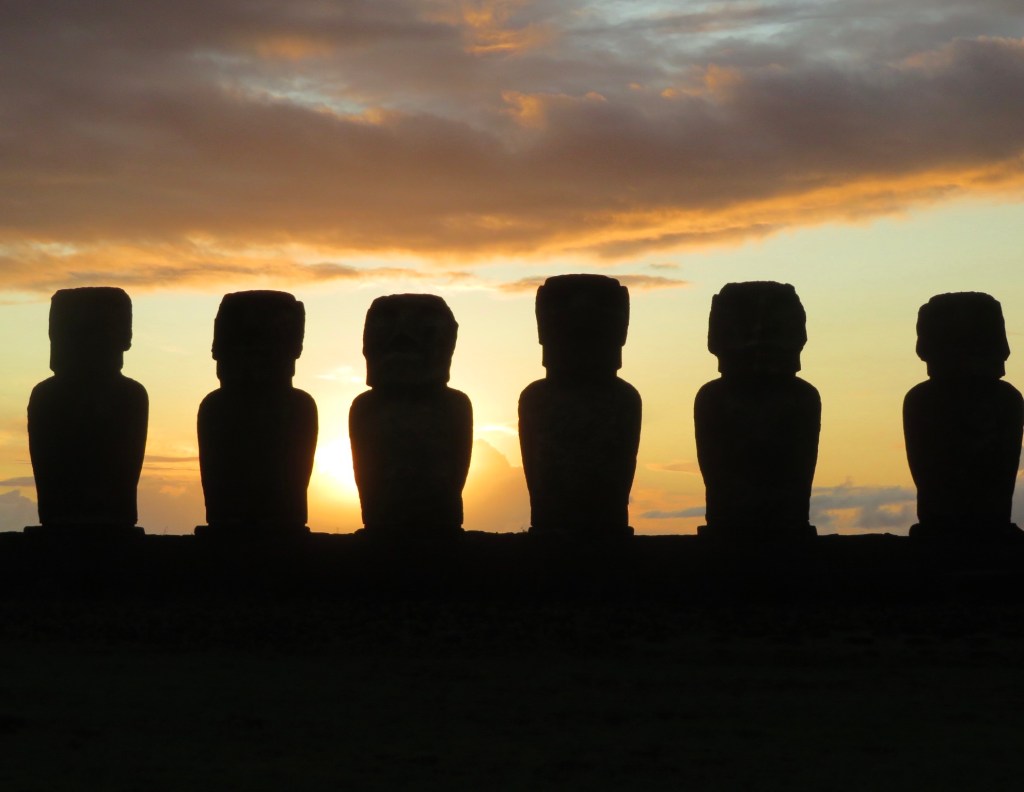
It takes almost 6 hours to fly there from Chile which is almost 4000km away. Rapa Nui definitely feels as remote and isolated as it sounds, on its own in the Pacific Ocean. It measures 14 miles at the longest point. It has an intriguing history and despite its small size there is much to see and do.
In Easter Island the past is the present.
Katherine Routledge
First Impressions!
I’m not usually one to gush emotions so freely but it feels every bit as special and magical as I imagined it! How amazing to visit a place so remote, with so much history and still so traditional, having had so few visitors over the years. I hope it stays this way for years to come and I have a feeling it might. The locals realise how special the place the Island they inhabit is. In addition, its location and the time and expense to get there will hopefully help to keep it unspoilt.
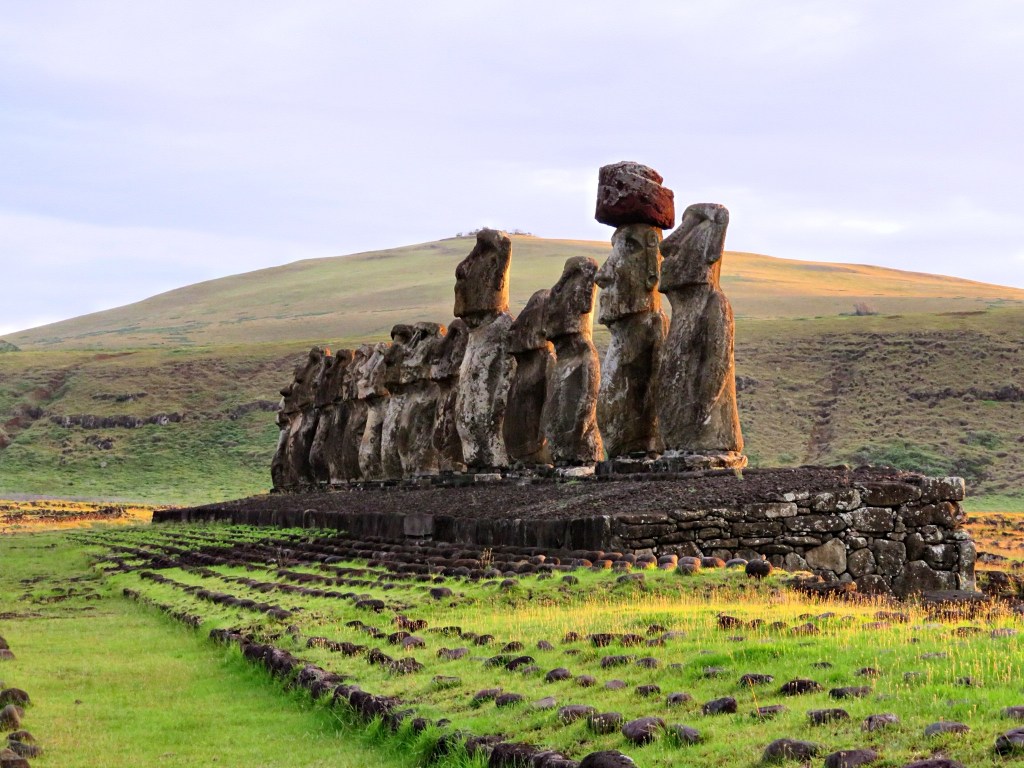
Approximately 100,000 people visit Easter Island a year, increased from around 10,000 visitors a year just ten years ago. I feel extremely lucky to have the opportunity to visit. If you get the chance to come here I thoroughly recommend you take the opportunity!
The first settlers
The first settlers on Easter Island came from another island in Polynesia sometime between 600 and 900 AD. They travelled around 2000 miles bringing with them everything they needed to start a new society on an uninhabited island.
Ancestor worship was popular in Polynesia. The belief was that a persons spiritual power was still effective and influential long after their death. Ancestral carvings were constructed elsewhere in Polynesia, but nowhere did they reach the scale and size of that of Easter Island. A common misconception is that the statues face out to sea to offer protection from intruders. The majority actually faced inwards to watch over and protect their people. The islanders became more proficient in the art of carving and transporting the stone heads, the size increased and the detail improved. You can see the later generation of statues are larger with more style and detail.
Why is it called Easter Island?
The first European, a dutch explorer named Jacob Roggeveen, sighted Easter Island on April 5th 1722. Since it was Easter Sunday the island was named Easter Island. They didn’t fare well with the locals and with poor weather continued on there journey. It was a further 48 years before there were any subsequent visitors to the Island. A Spanish expedition led by Felipe Gonzalez de Haedo from Peru. They claimed the island with little resistance but never came back to follow it up.
Four years later James Cook bought his weary and weak crew into Hanga Roa bay after over 3 months of travel looking for supplies and fresh water but found neither. The condition of the island had deteriorated in the 4 years since the Spanish were there and after a brief visit they were on there way.
Peru abolished slavery in the 1850s and needed cheap labour. They quickly saw the benefit of using Polynesians and putting them to work in agriculture due to their size and strength. They raided the island a number of times forcibly removing some 1500 Rapanui including some of the chiefs and elders who could still read the artistic Rongo Rongo script.
Many died on the journey and only 15 were repatriated back to Easter Island, and they brought small pox back with them. By 1877 the islands population was down to 111, down from around 12,000 during the peak of the Moai period.
In 1883, Chile had defeated Peru and Bolivia and began looking to expand its growing Empire. Easter Island was not immediately sought after, being far away and seen as little worth. After some gentle persuasion from the British – to avoid France claiming it – Chile made their move.

Hanga Roa
The Islands capital and home to 95% of the population, its the only part of the island with electricity and running water. Its compact and easily covered on foot. It has a couple of banks, a pharmacy, post office, hospital and fire station. As well as restaurants, mini-markets and souvenir shops.
I stayed in Hotel Gomero, a friendly little place not far from Main Street. It’s so small that nowhere is far from anywhere.

Moai
The Moai statues are hugely impressive and still surrounded by some mystery. In general there is a full day tour that covers most of the key sites, finishing at the beach in Anakena. And two half days, one where you go to Orongo – the crater. And the other afternoon I was less impressed with but what you’ll see across the two days is amazing!
There are many sites you’ll visit on a tour, I’ll touch on some of the key ones below. Alternatively you could hire a car and self guide but you won’t get as much informative history and information.
Rano Rakanu
Rano Rakanu is one of the most impressive sites. It’s the quarry or moai factory where they were made and contains 397 moai’s. It still looks like the iconic images you will have seen.

To make the Moai they were initially carved whilst still in the rock. The face, chest and belly are carved in the mother rock. Then they are taken from the mountain to carve the back. It’s believed they are slid down the mountain side, then stood up in a hole to finish the back, ears, neck and arms. From the hole where they are finished they are transported to their different locations. The scale is immense so it was a really impressive feat!
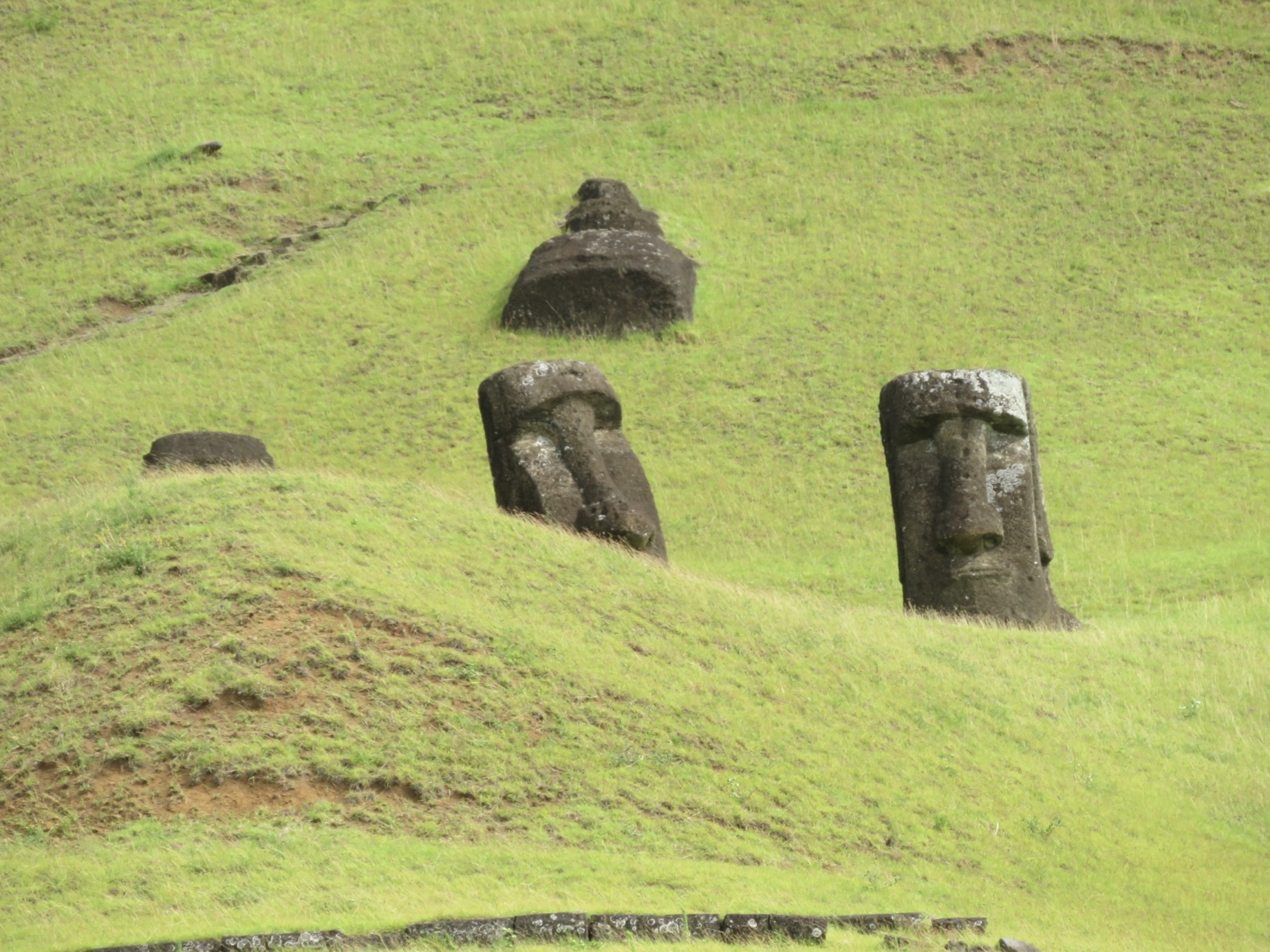
Tongariki
The best spot for watching the sunrise, the opposite side of the island to Hanga Roa. You can easily pick up a tour in town. Because of the late sunrise you don’t even have to be up ridiculously early to view it. I can’t recommend this enough!
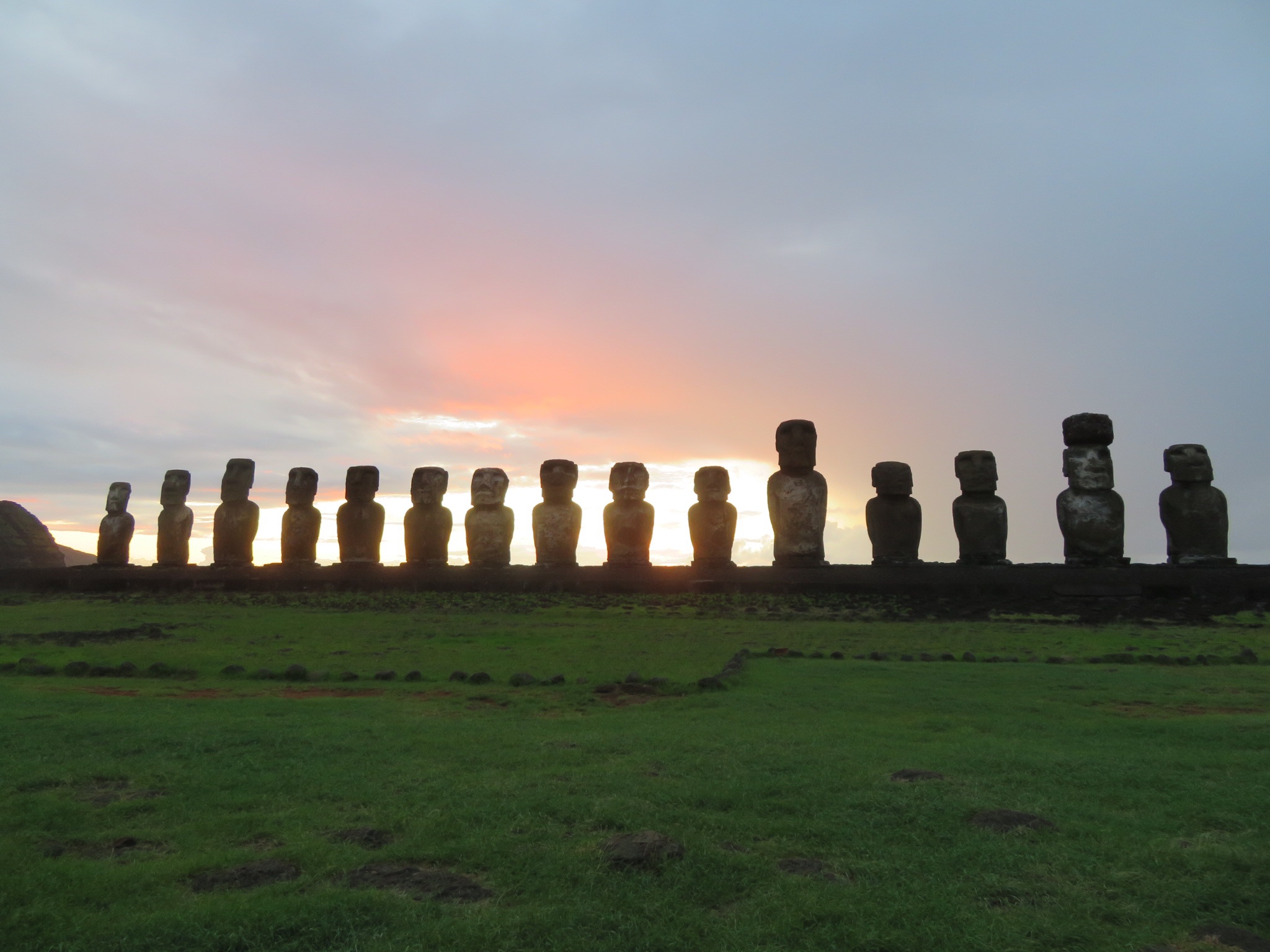
There’s 15 moai at Tongariki and the platform was restored by the Japanese government. The largest moai is 8m 37cm. The older moai are smaller and the 2 different generations of moai are evident.
The platform is 100m, 200m including the terrace.
As for sunrise – Wow. No filter on these photos – none needed on any of my photos on Rapa Nui, even though some of them don’t look real! The colours during sunrise are outstanding. I can’t recommend this enough whilst you’re here. Obviously you may be unlucky with the weather or the cloud cover but it’s worth a go!
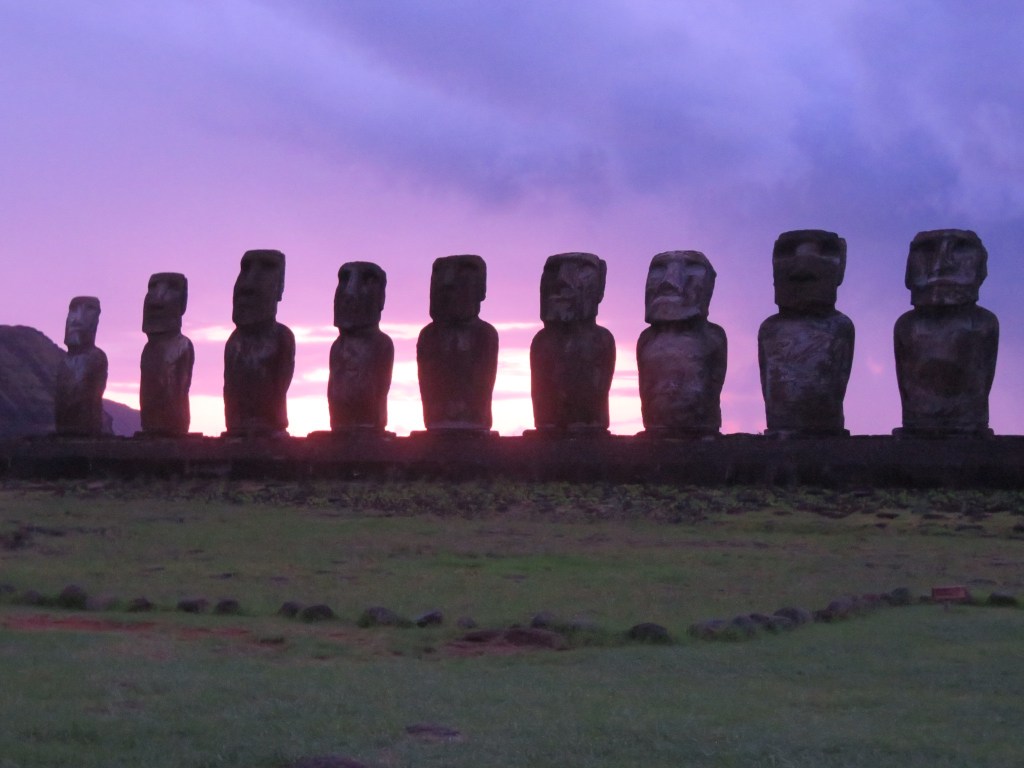
Anakena
Anakena has 7 Moai staring out to sea and a beautiful beach. These statues have more top knots or hats. The sand was gorgeous and the sea was so clear and a beautiful colour. The sea was rough until you were past the brakes the day I visited but once you’re in it it was lovely, and no other land for 1000s of miles!
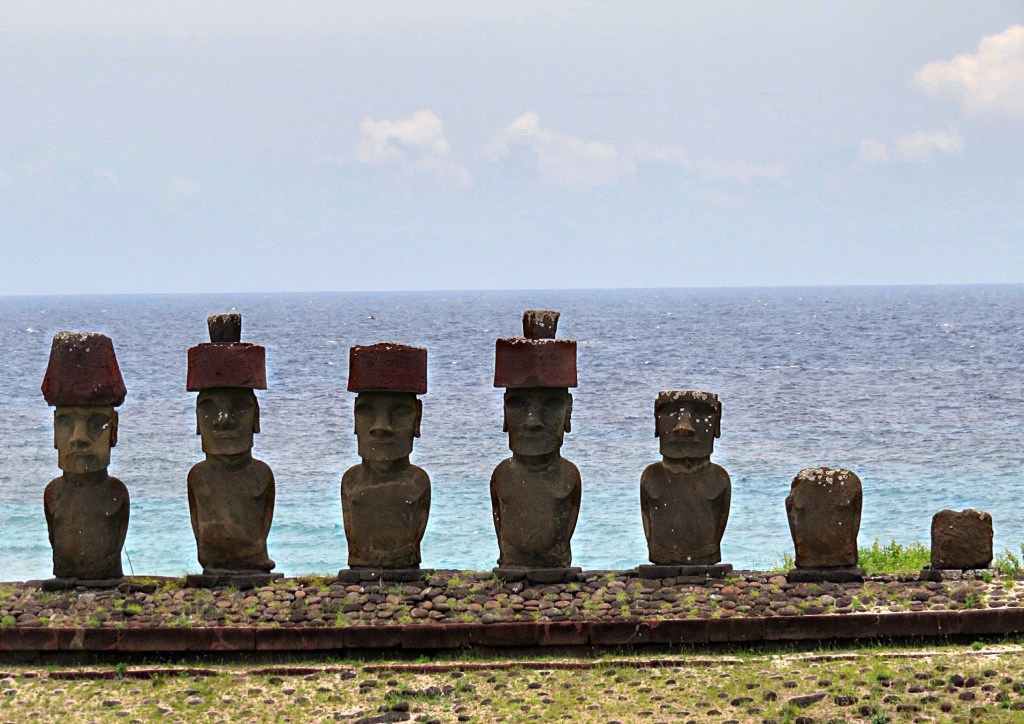
Tahai
A great spot to watch the sunset is Tahai near Hanga Roa. You can wander down, past the most interesting cemetery I’ve ever seen. Bring a bottle of wine or some beer and sit on the grass watching the sunset over 5 moai along with everyone else. That said whilst busy there weren’t too many people and you can enjoy it and get some decent photos.
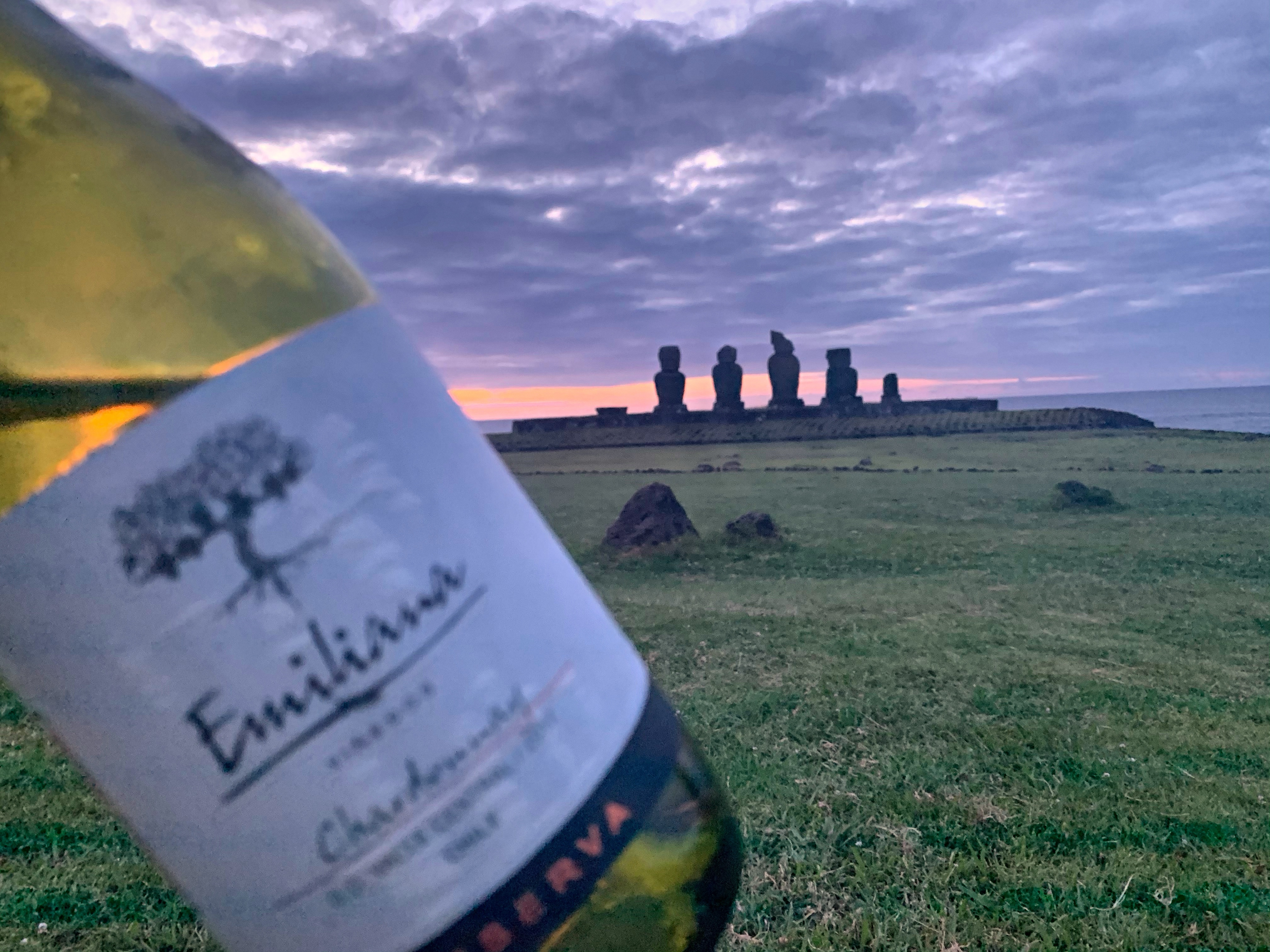
Orongo
Orongo is a huge crater some 1600m wide from a now extinct volcano. It was the second largest volcano on the island. It has its own microclimate and the lake is good for growing food and water. The water looks black.
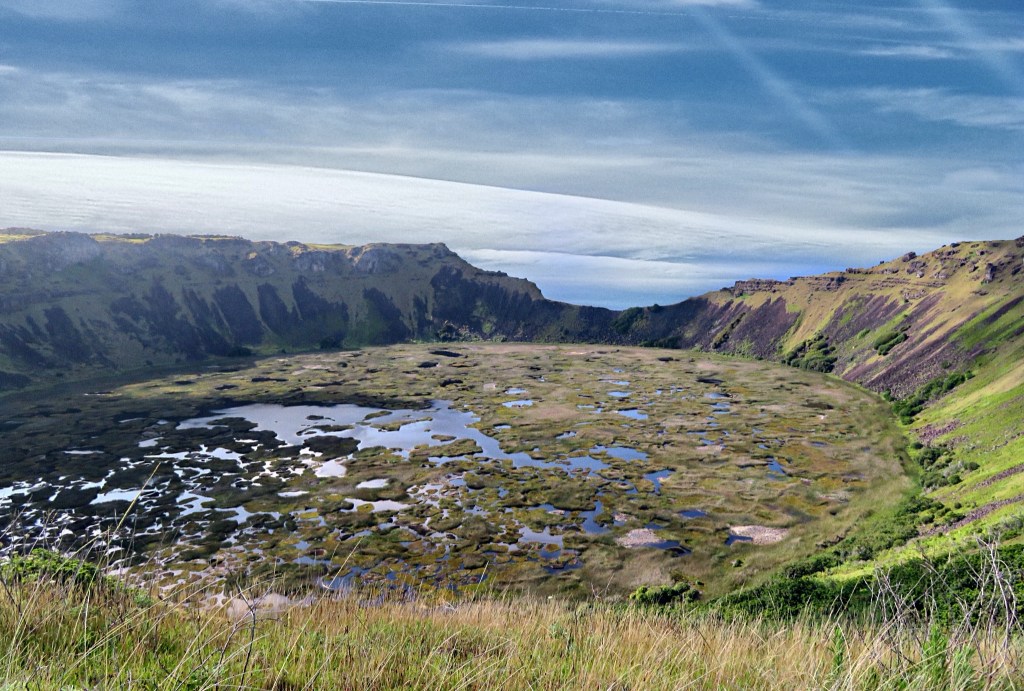
Years ago the locals used to use the pool to get fresh water, this could take all day due to the descent down inside the crater and the difficulty coming back up carrying the water. Once horses came to island this was quicker and easier.
The Birdman Competition
The Birdman competition, also known as Tangata Manu, used to unite the different clans into a single activity. It’s believed it stopped in the mid 1800s due to slavery and there being so few people left on the island. There is a carving near the top of Orongo that demonstrates the winner of competition. The one I saw was pretty faint, and I believe the rest are less accessible so we weren’t able to view them.
All clans would nominate a competitor, usually a teenager, it was a bit of a right of passage to becoming a man.
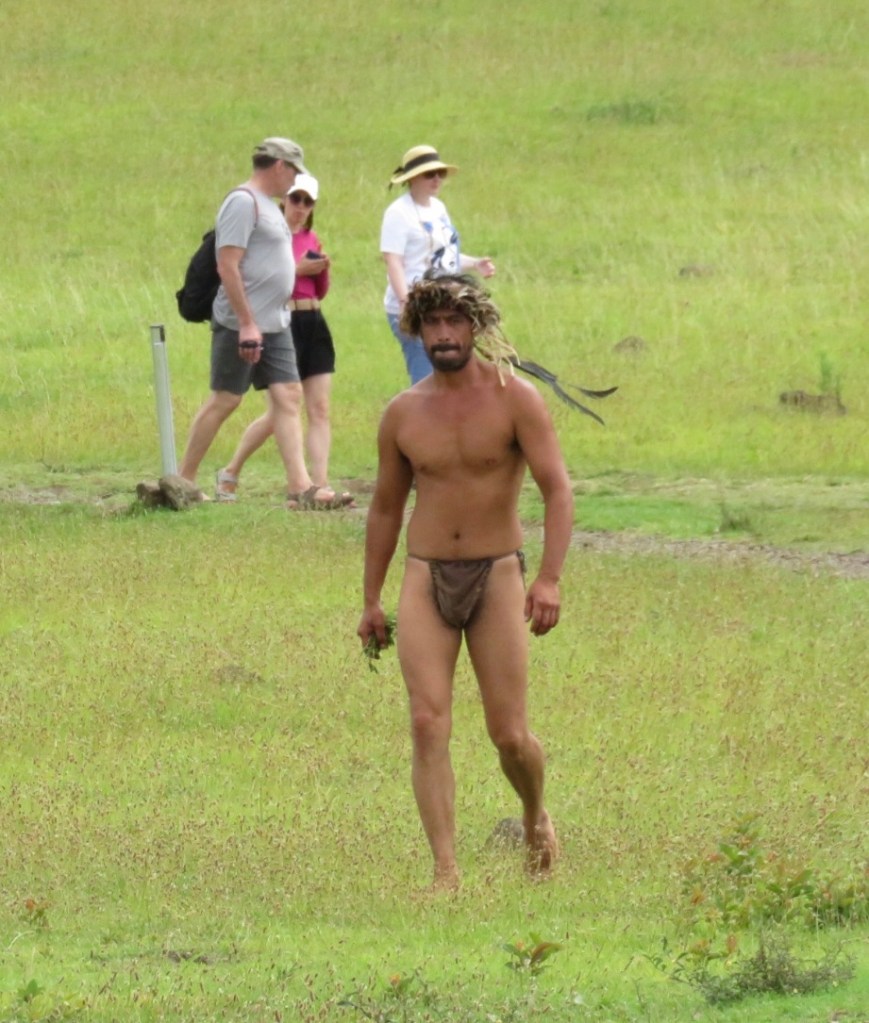
They would then run 200m up from lowest point of the volcano, 300m down wall of volcano into sea. Followed by a 2km swim to another island. They then had to find an egg of the manutara bird, which may involve staying on the island surviving in caves until a bird laid an egg. Then swim back to the coast, climb up the volcano and give the undamaged egg to The High Priest. The winner would become king of island for one year, and get to choose a wife.
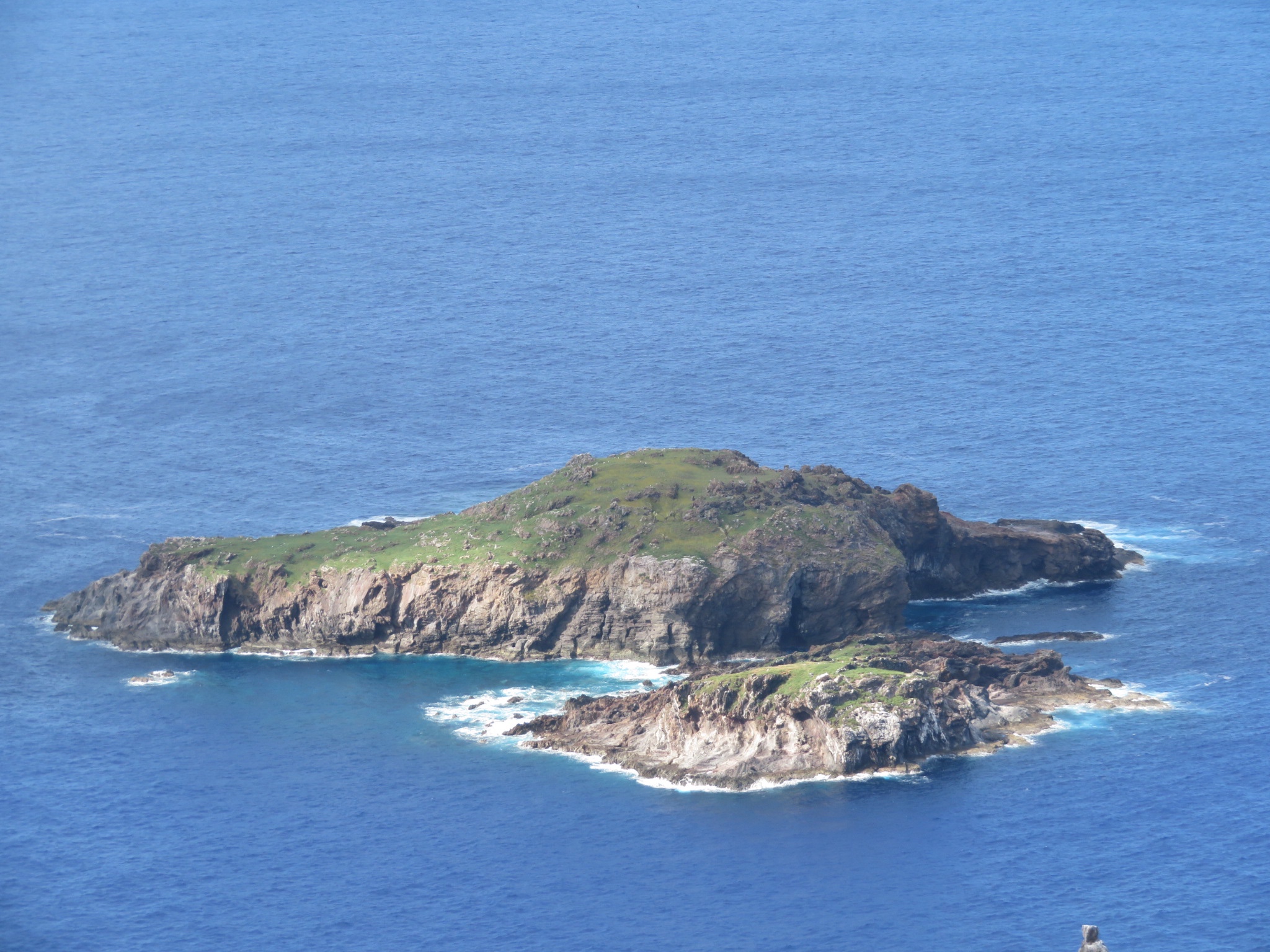
Food and Drink
Those of you that know me know how much I love sushi so I’ve obviously managed to find a couple of sushi restaurants!
One called Ohi Sushi, more of a lunch place – lovely and fresh and I washed it down with a strawberry daiquiri! I got chatting to a really nice local girl called Amanda, her dads American and she was was interesting to talk to.
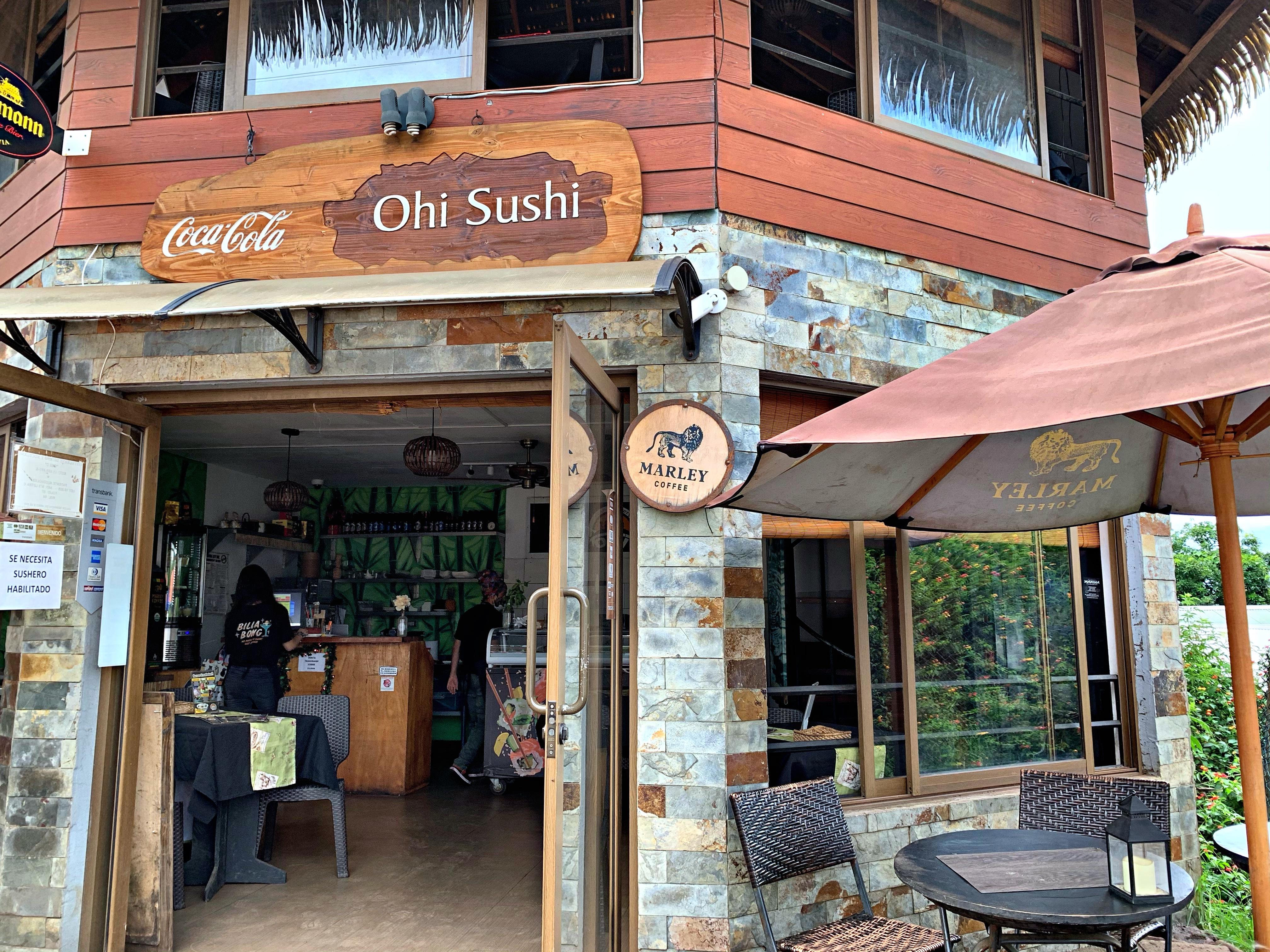
The other is Kai Sushi, again lovely and fresh, I had dinner there one evening. Both are on Main Street.
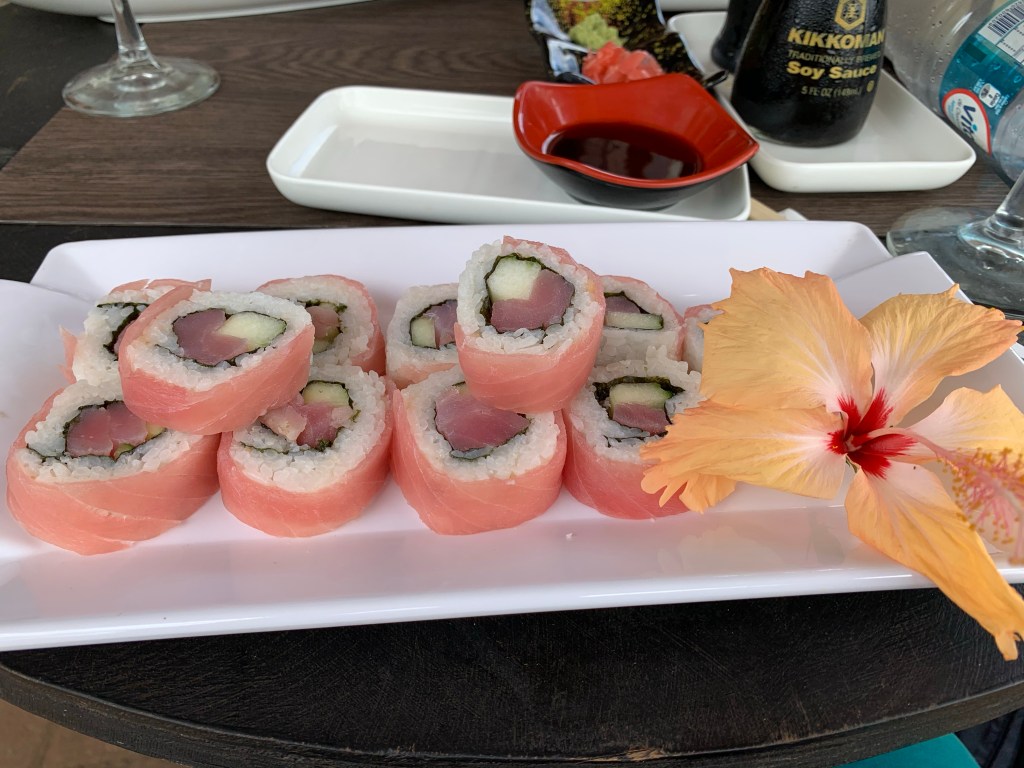
Another great restaurant on the beach front that was a recommendation that I will pass forward is La Kaleta. The ceviche was great and really fresh, the pina colada’s were delicious and the view was out of this world!

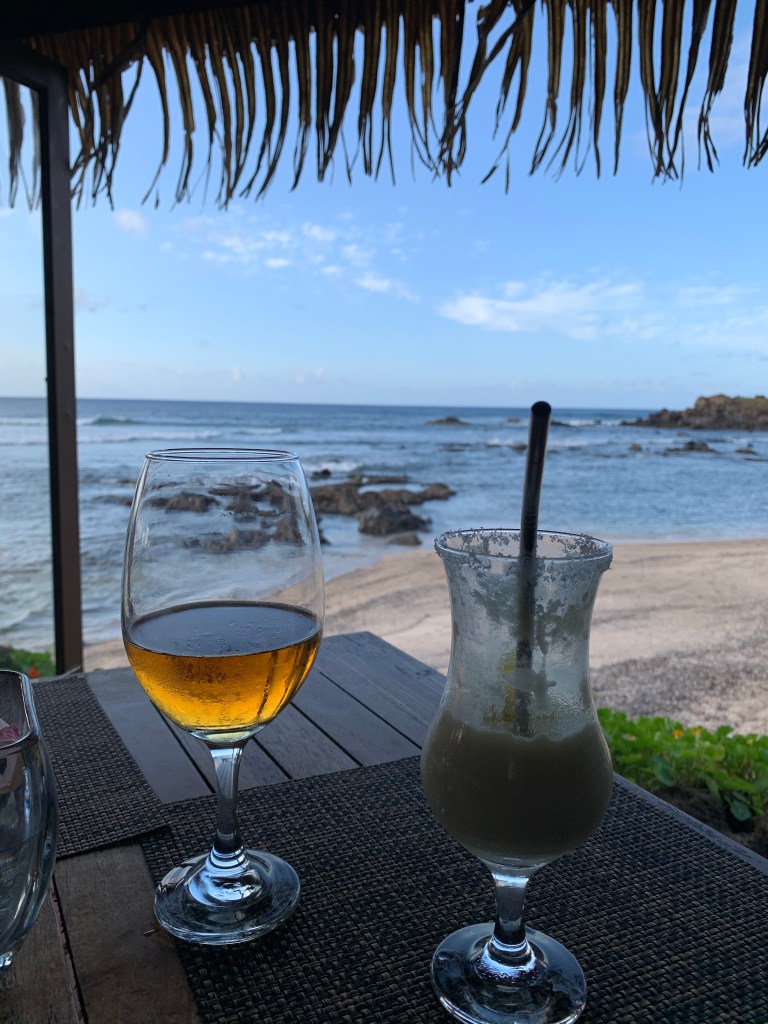
It started raining on my first afternoon as I was wandering around, I nipped in a little cafe called Mahute and had a local beer. It was nice and light though they have darker beers too. I chatted to a guy called George from the US who is half Chilean and has been working here for 18 months and travelling for 5 or 6 years.
Both Amanda and George were great to chat to and I picked up lots of local information I wouldn’t have otherwise done. I think being on your own makes you more approachable so may not have spoken to them as much if I wasn’t travelling solo.
Thanks all for your company and special shout out to Deb, Bob and Kunal – thanks for your great company!
I’m not normally a red wine drinker but I shared this one with Bob and it was really smooth and went down easily, so I may be a convert and will definitely look for this one again!
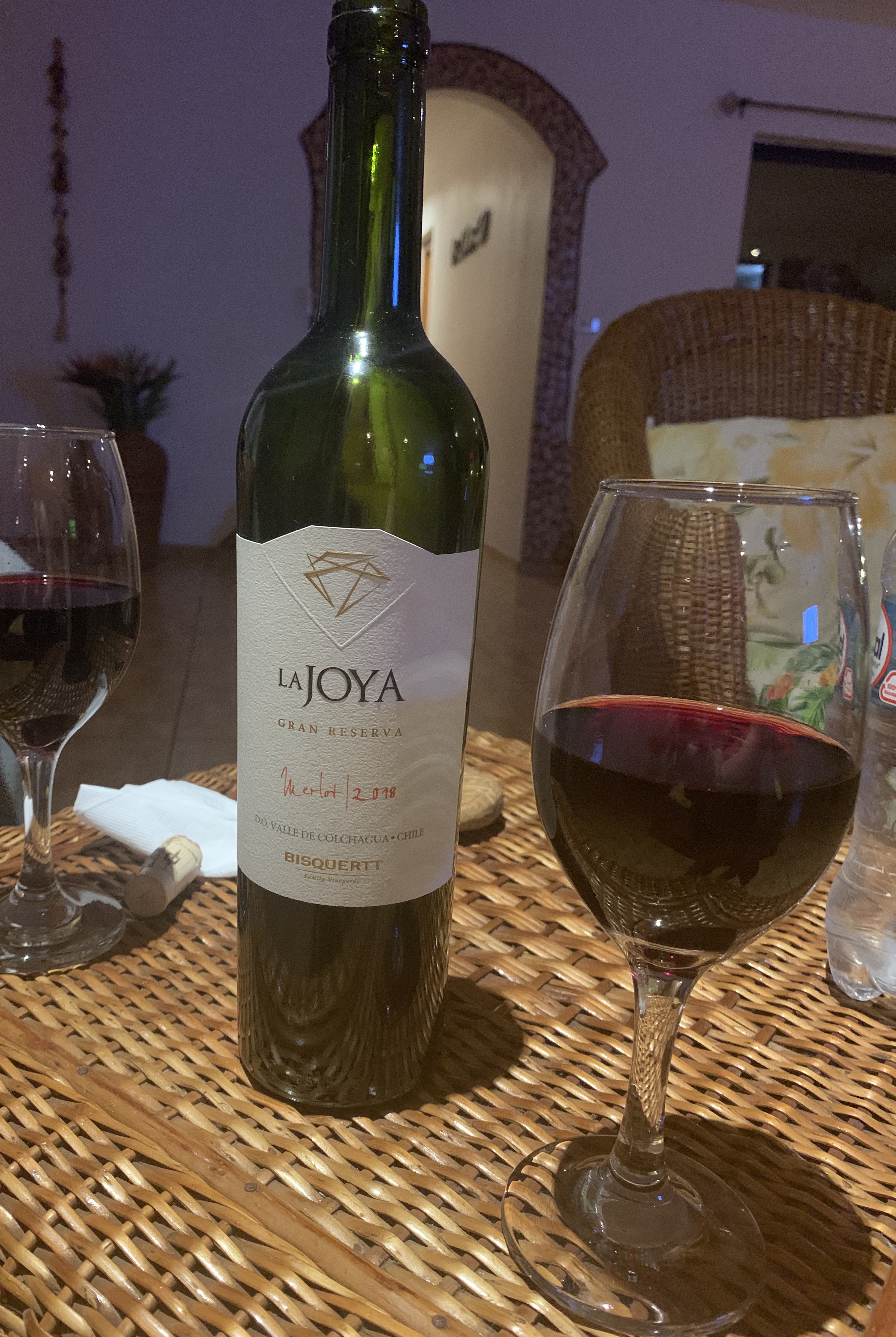
Stargazing
The lack of light pollution and clear skies make Easter Island an outstanding place to stargaze. If you’re lucky you’ll see a shooting star – they are said to be seen frequently – though unfortunately I wasn’t lucky enough to experience one. Again you can pick up excursions in town and they’ll take an amazing shot on a great camera and email it to you all so you can focus on enjoying it!
Apparently the females of the royal family would live in a cave for one year with no exposure to sunlight. They skin would go very pale and there eyes changed having become accustomed to the dark, they became good stargazers. Inside the cave are enormous carvings of astronomy maps of constellations.
The Prison
There is usually no more than a handful of inmates at any one time given the small population of the Island. Education goes as far as High School so if you hear that someone is at ‘University’, it usually means they are spending some time in prison!
Bike Hire and Cycling
Its relatively easy to hire a bike during your stay and you can hire one for the day for around 10 – 15 US dollars. The standard of bikes is ok, obviously be mindful of giving it a once over before you set off with it. I’m gutted I didn’t have time to enjoy this during my stay. A few people told me there’s not much to do on the island other than see the statues. I guess everyones opinion and perspective is different, personally I would have liked an extra day or two. I had two full days of tours which didn’t leave me enough time to explore and enjoy cycling, or shopping as much as I would have liked, or additional time to chill out and take it all in. Something to consider if you visit.
The island has good roads and some relatively flat surfaces making it ideal for cycling. If you want something more challenging then try cycling up to Orongo – a gruelling ride up and a short descent back down!
Getting a Tattoo
Tattooing has existed in Polynesian culture for 1000’s of years and is more than just body art. It was the main method of marking social rank and hierarchy, as well as marking important events in peoples lives.
There are a few International standard tattoo artists who will happily design something unique for you, and are known to have excellent hygiene and safety standards.
Rapa Nui tattoo designs are some of the most unusual in the whole Pacific. Most people recommend Mokomae at the top of Main Street. Maybe not for everyone, but if you like tattoos its the best souvenir and memory of your holiday I can think of!
Shopping
Worth bearing in mind that some places are shut on Sundays. Most of the locals are Catholic so don’t open. Prices are often a little higher than elsewhere but tend to be pretty consistent from shop to shop.
NASA
Apparently Easter Island has one of longest runways at 4km. It was built by NASA I’m case required for emergency landings for shuttles. Initially it was built for The Challenger, which unfortunately was never able to land there as it disintegrated. Shuttles now have more efficient landing methods.
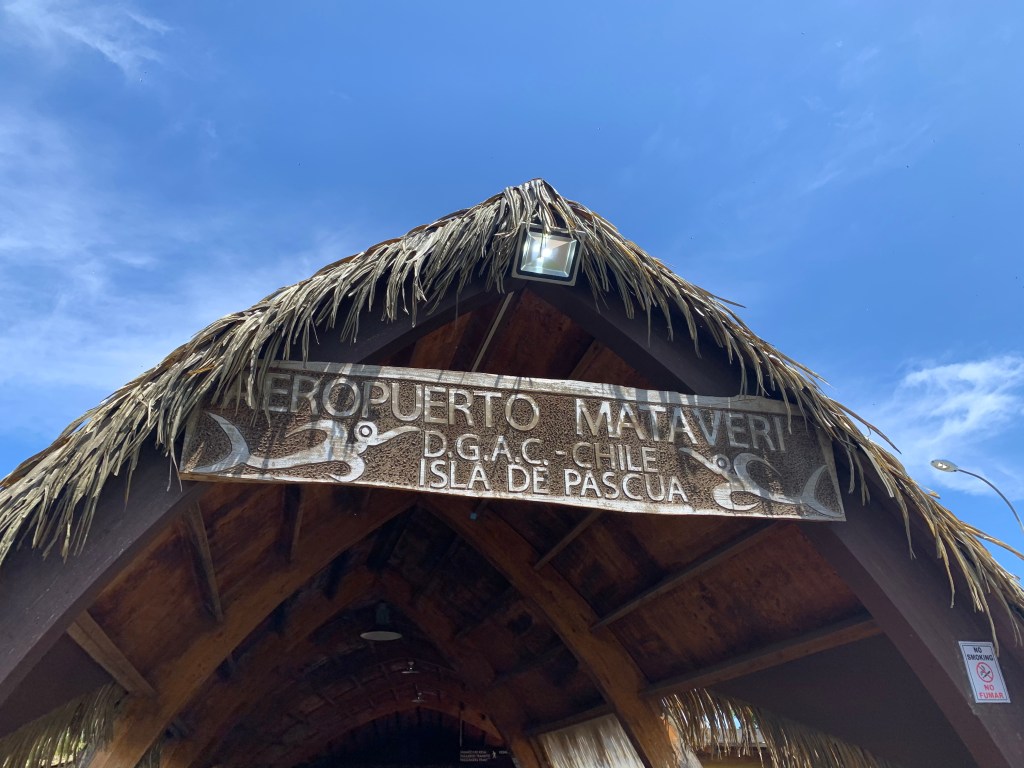
The Practical Stuff
Easter island uses both Chilean Pesos and US dollars. Tour prices are often quoted in dollars, though you can pay with either. Many shops and restaurants accept credit cards but not everywhere so it’s best to check first.
There is a one-time cash payment of 83 US dollars, or 54,000 Pesos for all non- Chileans which must be paid in cash. You can purchase on arrival at the airport, from a bureau on Main Street or apparently online in advance. This is for your entrance to the national parks. Proof of purchase is required at all sites.
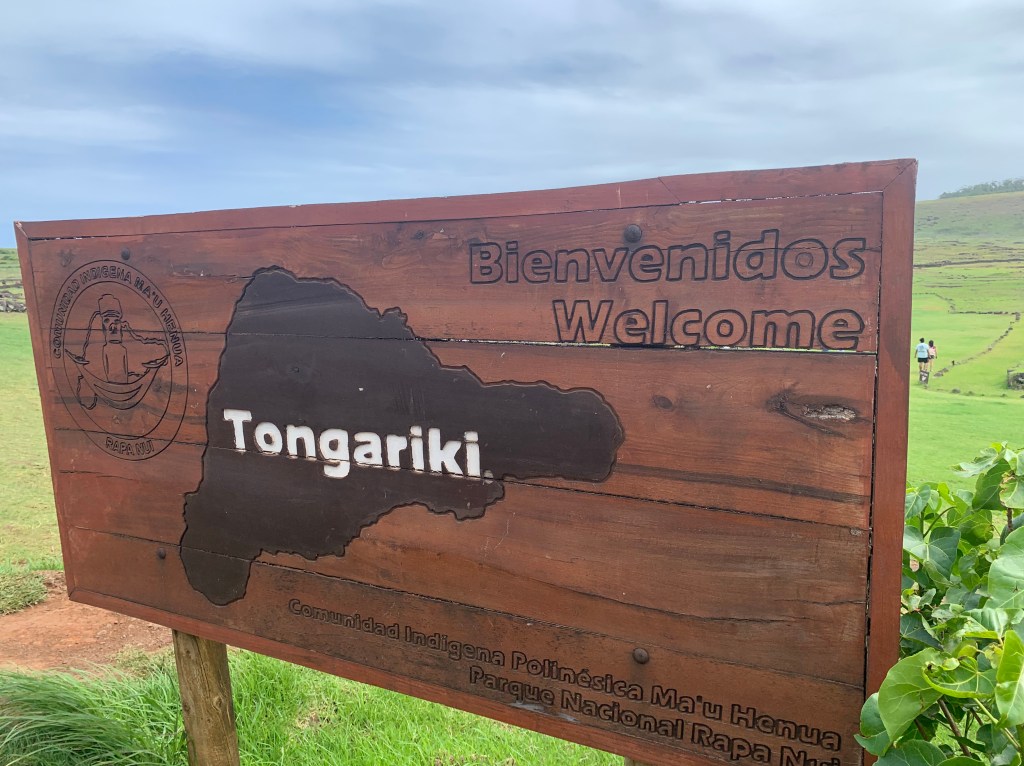
Tap water is safe to drink, though worth considering that our stomachs are not used to ‘different’ water so its probably easier to stick to bottled water. The water comes from underground freshwater reservoirs which is then purified so its perfectly safe for brushing your teeth or using for ice.
Voltage is 220v and plugs are round 2 pins. Easter Island is always 2 hours behind Chile. It really ought to be 3-4 hours given the distance but is kept nearer to the time in Santiago to facilitate banks and business. Therefore sunrise and sunset are relatively late.
The current population is circa 8000 people with approximately half being Rapanui, people of Polynesian Descent, the remainder are from Chile with approximately 500 resident foreigners. The official language is Spanish, although the Rapanui also speak Rapa Nui – a Polynesian language. English is not widely spoken but some shops and restaurants speak some English.
There is so much more to this place I can’t fit it all into one post. I genuinely think that calling Easter Island the most extraordinary place on Earth is a credible statement, it’s still so full of mystery, I enjoyed my visit immensely! Next stop Rio!

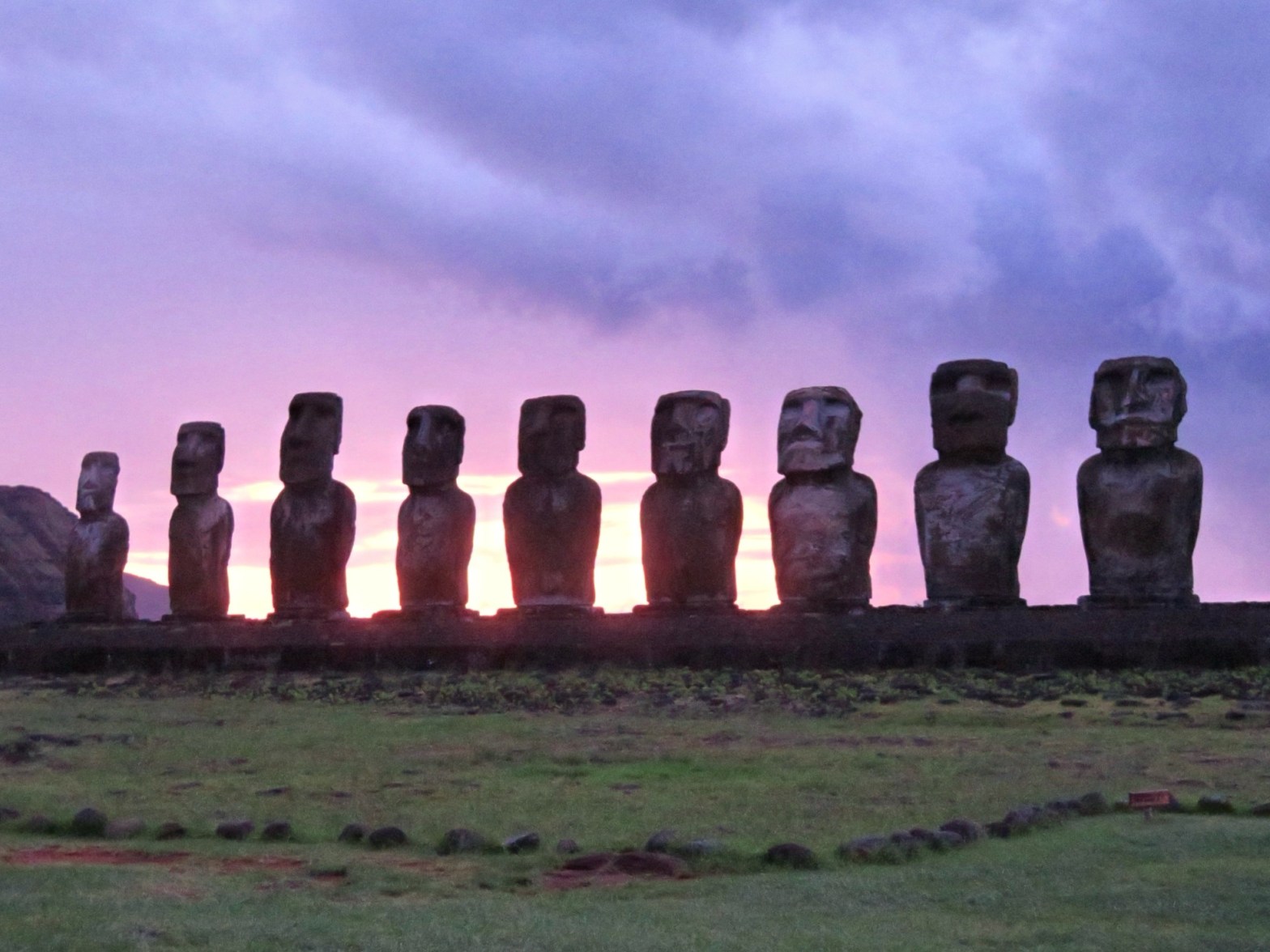
Fab blog with so much detail. Shame you didn’t have time for a Strava ride….you’ll have to go back!
LikeLike
I know gutted!
LikeLike
Awesome blog. Great photos too!
LikeLike
Brilliant,interesting blog .Sunrise and wine perfect kiran! x
LikeLiked by 1 person
Thanks Jason! You’d love it. Hope you’re good x
LikeLike
Superb account of Easter Island. Such a magical place. Love reading others accounts of their time there and seeing so many parallels with my own.
If you want to please have a of my time on Easter Island and beyond, follow and like as well if so inclined 😁 https://worldcomplete.travel.blog/2020/01/01/easter-island-enjoy-the-middle-of-nowhere/
LikeLiked by 1 person
Thanks for sharing, it’s interesting to experience a little of someone else’s account. Glad you enjoyed mine, thinking back to it fondly now!
LikeLiked by 1 person